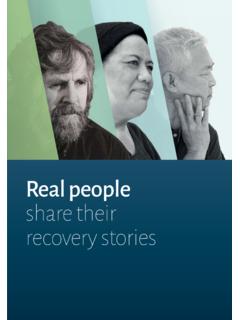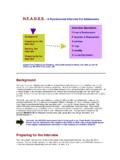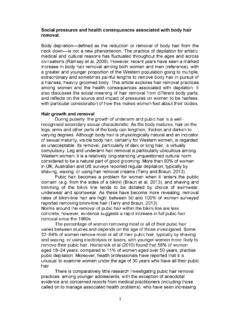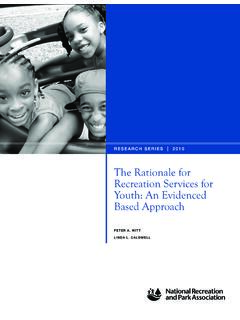Transcription of HEEADSSS Assessment: A Tool for Primary Level
1 HEEADSSS assessment : A tool for Primary Level Services and NGO's Working with Youth Pat Mitchell and Bronwyn Dunnachie Presenting: A brief background to the HEEADSSS project The Youth Health context Overview of the project, linkages and alignments to date The HEEADSSS assessment Next steps Background Prime Minister Youth Health Initiative Well aligned with the principles underpinning Rising to the Challenge': Partnerships, service integration, early intervention, access to services, stepped care Funded by MOH and HWNZ. Commenced with scoping exercise . The Scoping Exercise . Survey sent out to Primary Level Services nation-wide Validated that the assessment is widely used, however access to training was variable or non-existent in some areas Significant variability in training content What does Primary Care look like for Young People Wider than General Practice insufficient to meet demand or not youth focussed and therefore were not being accessed by youth (Evaluation of YOSS, MOH, 2009).
2 Youth One Stop Shops (YOSS). Youth Specific Services Colocation of youth specific services Issue related services FPA, Sexual Health Services etc Youth Health services Literature Review Fleming and Elvidge (2010). Access to Primary Care Services The majority of young people (79%) access healthcare Approx. 35% had the chance to see the health professional privately Approx. 45% had confidentiality assured From Clarke et al (2013). Youth 12 Overview: The Health and Wellbeing of NZ Secondary School Students in 2012. Auckland, New Zealand: The University of Auckland Access to Primary Care Services 19% of young people indicated they were unable to access healthcare (females 21% and males 16%). Reasons included: Hoping the problem would go away or get better (51%). Not wanting to make a fuss (46%). Having no transport (28%). How might Primary Level Services Intervene? H-Home E-Education/employment E-Eating A-Activities (peer group).
3 D-Drugs and Alcohol S-Sexuality S-Suicide/depression S-Safety Goldenring and Rosen Contemporary Paediatrics Jan 2004; 21:64. HEEADSSS . The Adolescent Psychosocial assessment HEEADSSS assessment Conversational framework for assessment Not a screening tool Adaptable to a range of environments, professionals and situations Early identification of concern and areas of strength Part of wider context for youth Overview of the Project: Expert Advisory Group Blended learning approach: E- Learning and Face to Face workshop E-Learning module piloted with Primary Level services and evaluated Blended workshops across NZ 2013. x4 - Capacity has exceeded demand for workshops HEEADSSS eLearning Module Free and fast registration! HEEADSSS assessment Blended Learning Workshop % of all Profession of Respondents Number respondents Nurse 76 Counsellor 21 Youth Worker 11 Social Worker 10 Medical Officer 4 Occupational Therapist 4 Advisor 3 Psychologist 3 Social Worker Student 3 Health Promoter 2 AOD Worker 1 CSC 1 Mental Health Worker 1 Primary Mental Health Worker 1 Psychotherapist PMH Coordinator 1 Receptionist 1 Blank 4 TOTAL 147 100%.
4 ELearning Count of PROFESSION. Row Labels Total Community health worker 18. Consumer/Other 31. Doctor 19. Business/Administrator 9. Health Professional 48. Medical Practitioner 5. Midwife 1. Nurse 48. Occupational Therapist 4. Psychologist 10. Registered nurse 86. Social Worker 31. Teacher/Educator 20. (blank). Grand Total 330. Linkages with other key initiatives COPMIA. CAPA. RSPICAMH/AOD. Stock-take Incredible Years and Triple P. CEP and Youth . Next Steps Extension of the eLearning module X3 additional blended learning workshops Train the trainer using a support framework approach Continued evaluation Participation in the development of an infrastructure to sustain learning Recommendations to MOH/HWNZ. Questions The Werry Centre for Child and Adolescent Mental Health Workforce Development Contact.








